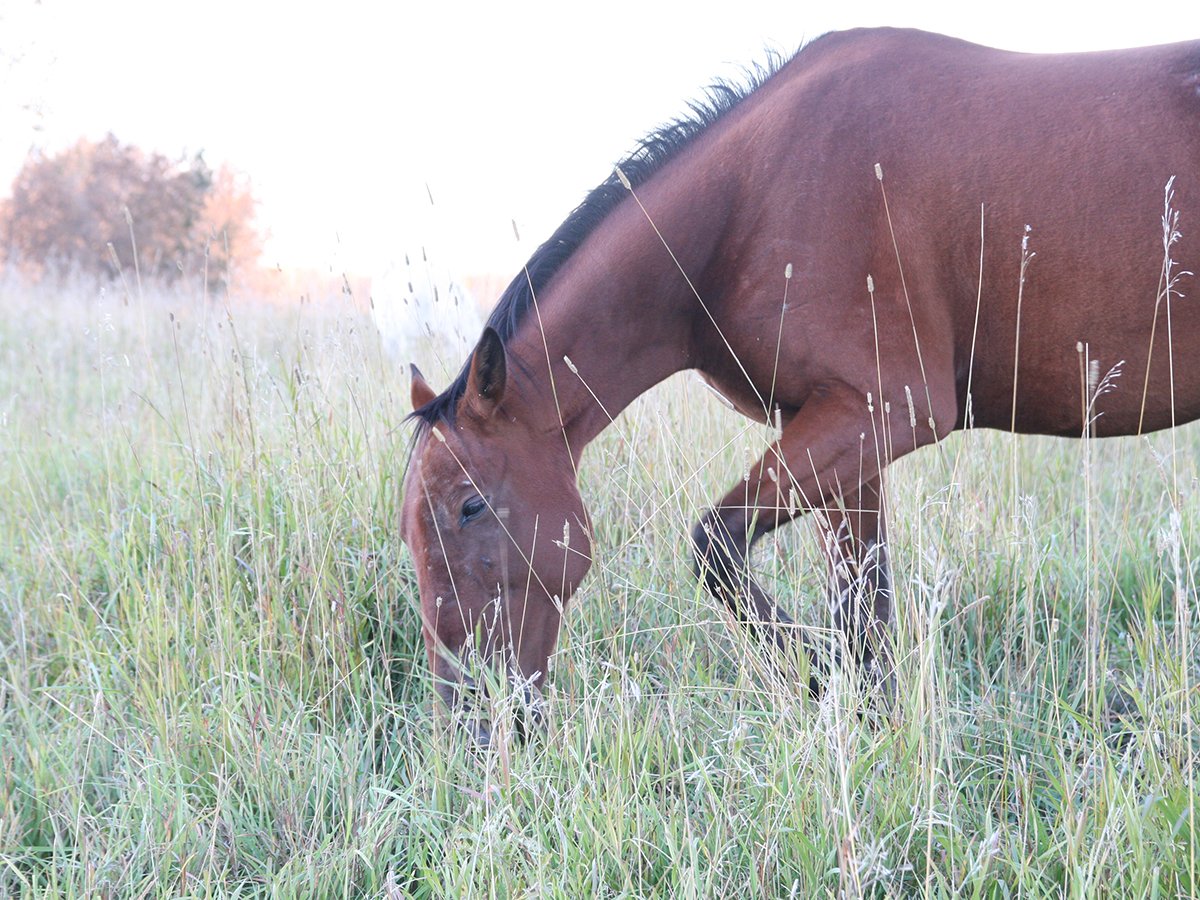Since the 1980s, the evolution of hoof care has been deeply influenced by the barefoot movement, which emerged as a response to the limitations of traditional horseshoeing.
This movement advocated for the natural state of a horse’s hoofs, emphasizing their role as dynamic, living structures integral to the horse’s overall health.
Central to barefoot care was the recognition that domestication had compromised hoof quality, regardless of whether the hoofs were barefoot or shod. This understanding highlighted the significant role of the environment in hoof health and emphasized the need for changes within domesticated conditions to effectively support a barefoot horse.
Read Also

VIDEO: Ag in Motion documentary launches second season
The second season of the the Western Producer’s documentary series about Ag in Motion launched Oct. 8.
Over the past four decades, the insight that horse health as a whole is very important to hoofs has fuelled a paradigm shift that goes beyond hoof care, challenging traditional husbandry practices and emphasizing the importance of a horse’s diet, lifestyle and connection to its environment as essential factors for maintaining healthy hoofs.
Dr. Hiltrud Strasser, a German veterinarian, was among the first to advocate systematically for barefoot trimming. She emphasized the biomechanics of hoofs and highlighted the detrimental effects of modern environments and artificial constraints, such as horseshoes, on hoof health.
Her book, A Lifetime of Soundness, published in the late 1990s, reinforced these ideas and popularized barefoot trimming as an alternative to shoeing. While her views have been divisive, Strasser’s work brought critical attention to hoof health and equine welfare, inspiring a growing community of horse owners and professionals.
Meanwhile, in the United States, farrier Jaime Jackson independently conducted groundbreaking studies of wild horse hoofs in the western United States. His findings revealed that wild horses, despite seemingly harsh conditions, maintained strong, functional hoofs without the need for shoes, emphasizing the significant roles of diet, movement and environment in hoof health.
Jackson’s 1992 book, The Natural Horse, detailed the anatomy and robustness of wild hoofs, laying the foundation for a similar barefoot care movement in North America. His emphasis on environmental factors reframed hoof care as part of a horse’s overall lifestyle and well-being.
Despite working independently, Strasser and Jackson’s findings converged on the idea that hoof problems often result from lifestyle and environmental factors rather than trimming or shoeing alone.
Their insights sparked a revolution in hoof care, empowering farriers, veterinarians and horse owners to rethink how they maintain hoof health and soundness.
By the early 2000s, Pete Ramey, an American farrier, emerged as a leading figure in the barefoot movement. Drawing from Jackson’s work, Ramey focused on making barefoot hoof care practical and accessible.
Through books like Making Natural Hoof Care Work for You and Care and Rehabilitation of the Equine Foot, Ramey shared effective trimming techniques, supported by visual aids, to educate horse owners, trimmers and veterinarians. His approachable teaching style demystified the movement, broadening its appeal and encouraging more widespread adoption.
Dr. Robert Bowker, a veterinarian and researcher at Michigan State University, brought scientific rigor to the field of hoof care with his studies on hoof biomechanics. His research illuminated the internal structures of the hoof and their functional importance during movement, particularly in the heel region.
In 2003, a student under Bowker published Physiological Trimming for Healthy Equine Foot, emphasizing the need to preserve the hoof’s natural function for optimal health and movement.
Bowker’s work bridged the gap between the microscopic analysis of thousands of cadaver hooves and the practical aspects of hoof care, leaving a lasting impact on both veterinary science and equine management practices.
The barefoot movement has inspired significant advancements in tools and methods for hoof care.
One key innovation is the development of hoof boots, which were originally designed to provide temporary protection for horses transitioning from shoes to barefoot. These boots have evolved into highly engineered products designed for comfort, functionality and adaptability to various terrains.
Modern hoof boots have made barefoot care more practical and accessible, enabling a broader range of horse owners to embrace this approach.
The movement has also fostered collaboration between farriers, veterinarians and trimmers, leading to the emergence of equine podiatry — a hybrid field that integrates veterinary science with farriery.
This interdisciplinary approach emphasizes that hoof care is not just a mechanical task but a vital aspect of a horse’s overall health. This development represents a shift toward more precise and co-ordinated care for horses by focusing on a holistic concept of hoof health.
The barefoot movement has redefined how modern horses are cared for, prioritizing natural anatomy, biomechanics and environmental harmony.
Pioneers like Strasser, Jackson, Ramey and Bowker have paved the way for this transformation, but the movement’s success is also rooted in the collective efforts of horse owners and professionals who recognized the value of a more natural approach to hoof care.
Today, barefoot care is no longer a fringe practice but a widely recognized and respected method within equine wellness.
The movement has demonstrated that while the barefoot trim may not be ideal for every horse, understanding and respecting the hoof’s natural function benefits all horses—including those that are shod. It has also fostered a more holistic view of equine health, linking hoof care to overall physiological and environmental factors.
The future of hoof care will likely see increased collaboration between veterinarians, farriers, barefoot trimmers and horse owners, fostering a multidisciplinary approach to developing more informed care strategies. As equine podiatry continues to advance, it is poised to offer deeper insights into maintaining soundness and vitality in horses, helping them lead healthier, more comfortable lives.
With these evolving understandings becoming more integrated into mainstream equine management, the field promises a lasting legacy of improved health and care for generations to come.
Carol Shwetz is a veterinarian focusing on equine practice in Millarville, Alta.

















